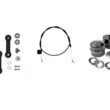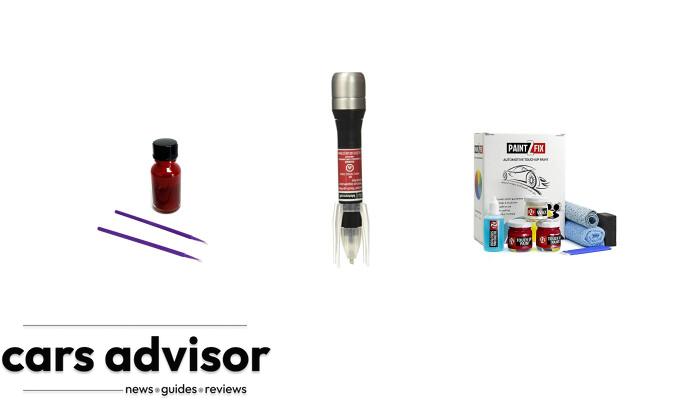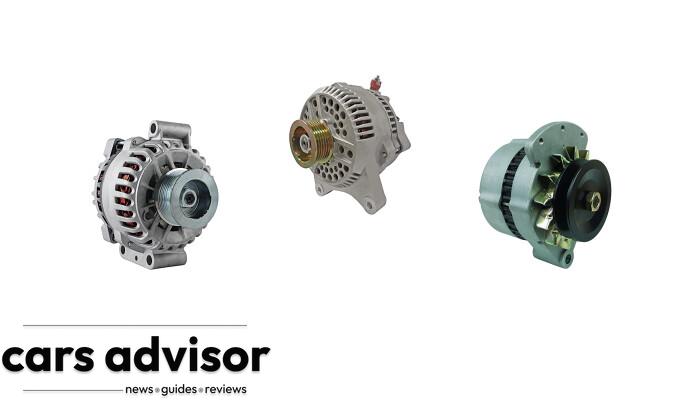You might not give it much thought, but that little oil dipstick hiding under your vehicle’s hood is critical in ensuring your engine’s smooth and efficient operation.
One issue you may encounter while checking your engine’s oil level is bubbles on oil dipstick—an anomaly that can confuse and frighten car owners. But fear not!
This blog post will unravel the mystery behind these perplexing bubbles, discussing their causes, consequences, and ways to address them.
Understanding Bubbles On Oil Dipstick
To properly understand bubbles on the oil dipstick, it’s important to differentiate between normal and abnormal bubbles and identify the various causes ranging from overfilling to air leaks and potential engine problems.
Normal Vs. Abnormal Bubbles
As a seasoned driver, I’ve discovered that it’s essential to differentiate between normal and abnormal bubbles on your oil dipstick.
Normal bubbles are small and typically harmless, often appearing due to minor agitation or splashing of engine oil during driving.
On the other hand, abnormal bubbles signal potentially serious issues with your vehicle’s engine or lubrication system.
These bubbles are larger, persist even after the engine has been shut down for some time, and may also exhibit discolouration, such as a brownish hue – an indication of water or antifreeze contamination within the oil.
Abnormal foaming can reduce engine oil’s ability to lubricate critical components effectively, leading to increased wear and potential damage over time.
Causes Of Bubbles (Overfilling, Air Leaks & Engine Problems)
I have learned that there are various causes of bubbles on the oil dipstick.
Some of these causes include:
- Overfilling: When too much oil is added to the engine, it can cause excessive splashing and air bubbles.
- Air leaks: Leaks in the suction side of the oil pump can cause air to be introduced into the lubrication system, leading to foaming and bubbles.
- Engine problems: Worn or damaged parts, such as faulty piston rings or a damaged cylinder head gasket, can allow combustion gases to enter the crankcase, causing bubbles on the oil dipstick.
It is important to identify the root cause of these bubbles as soon as possible, as they could be a sign of potential engine problems that require immediate attention.
Regularly checking your oil level and condition on a dipstick can help spot any issues before they become more serious.
The Consequences Of Ignoring Bubbles On The Oil Dipstick
Ignoring bubbles on your oil dipstick can lead to serious consequences, such as engine malfunction and contamination. It’s important to regularly check your dipstick’s oil level and condition to identify any potential issues before they become major problems.
Importance Of Regularly Checking Your Oil Dipstick
Regularly checking your oil dipstick is crucial for ensuring the proper functioning of your engine and identifying potential problems before they become more serious.
Ignoring bubbles on the dipstick can lead to major engine malfunctions, resulting in costly repairs or even a breakdown while driving.
Checking your oil levels is a simple yet important step in maintaining your car’s health and longevity.
By doing so, you can avoid potential issues and ensure that your car runs smoothly.
Identification Of Engine Issues
Identifying engine issues through the presence of bubbles on your oil dipstick is critical for maintaining optimal engine performance.
Large and abnormal bubbles can sometimes indicate significant engine malfunctions, such as worn or damaged parts that require immediate professional attention.
Observing brown bubbles above the oil level line can also identify coolant or antifreeze contamination in the lubrication system.
Additionally, small but consistent bubbling may suggest excessive splashing within the oil pan caused by low oil levels, leading to ineffective lubrication and premature wear and tear of connected components like the crankshaft.
How To Properly Check Your Oil Dipstick For Bubbles
To properly check your oil dipstick for bubbles, start by ensuring your engine is cool and on level ground before opening the hood and locating the dipstick; then, pull out the dipstick, wipe it clean with a rag or paper towel, reinsert it into the oil pan fully, and remove it again to examine if there are any frothy or excessive splashing bubbles above or below the oil level line.
Steps To Check Oil Levels
To avoid potential engine problems, checking the oil level on your dipstick regularly is important.
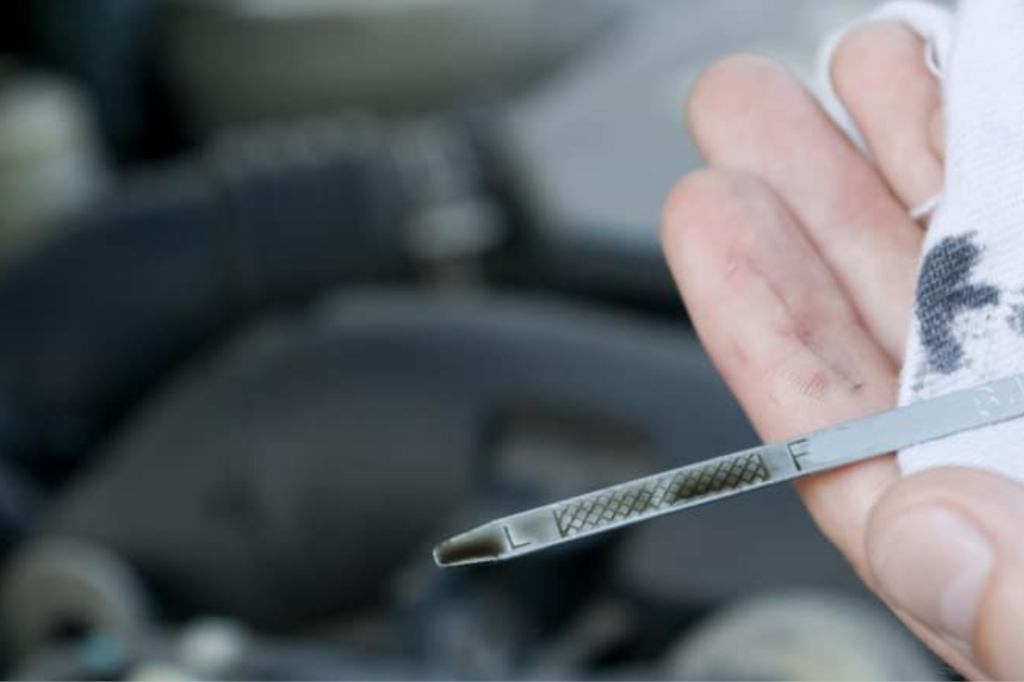
Here are the steps to follow:
- Park your vehicle on a level surface and allow the engine to cool for a few minutes.
- Locate the dipstick under your hood or near your motorcycle engine.
- Pull the dipstick and wipe it clean with a cloth or paper towel.
- Re-insert the dipstick into its tube, then pull it out again.
- Check the oil level against the dipstick’s markings, indicating whether it is full, low or needs additional oil.
- Check for any unusual color, texture or bubbles on the oil while examining it on the tip of your finger or a cloth.
Ensure you follow these steps carefully and regularly to keep your engine running smoothly and avoid any major issues arising from not maintaining proper engine lubrication through appropriate engine oil levels in circulation.
Examining Oil On The Dipstick For Bubbles
When examining the oil on the dipstick for bubbles, it is essential to take note of their size, quantity, and location. Large, excessive bubbles above the oil level line typically indicate engine malfunction or contamination from coolant or antifreeze.
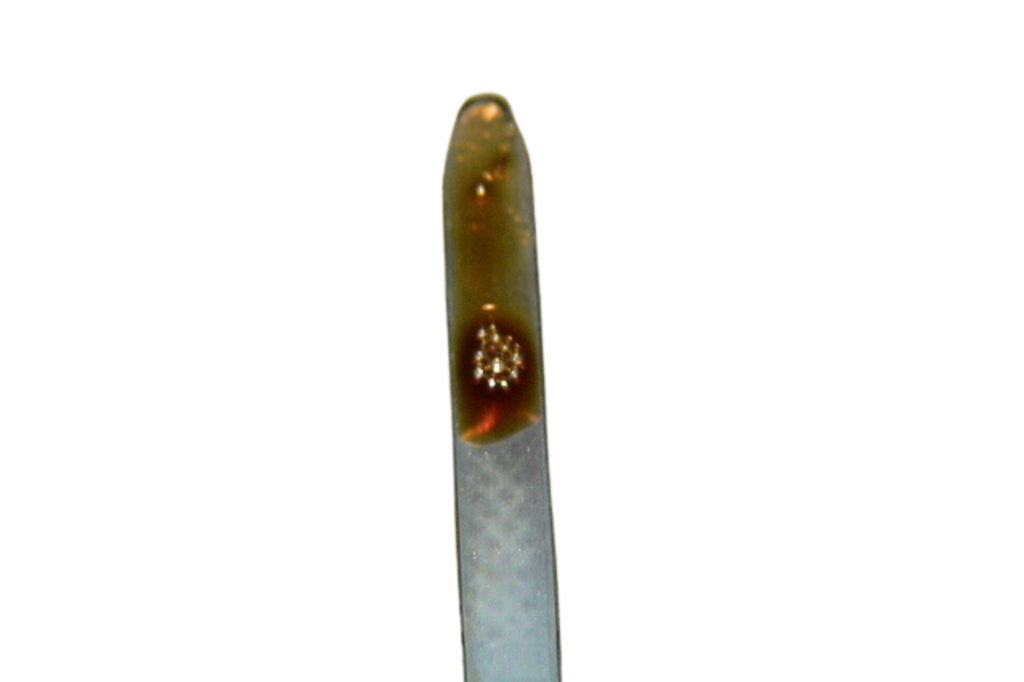
Suppose you notice frothing or foam on your dipstick regularly or in large amounts. In that case, it’s crucial to address this issue immediately, as this could diminish its lubricating ability and cause significant damage to your engine.
Regularly checking your engine’s dipstick is a best practice to identify potential issues with your vehicle before they become more severe problems.
Addressing And Preventing Bubbles On The Oil Dipstick
Proper maintenance is crucial to address and prevent bubbles on the oil dipstick. Regularly changing the oil filter, monitoring the oil level, and ensuring the engine is not overfilled can help prevent excessive splashing and frothing.
Additionally, seeking professional help when abnormalities occur can save you from costly repairs.
Solutions For Bubbles
If you notice bubbles on your oil dipstick, don’t panic.
There are things you can do to address the issue:
- Check for overfilling: If you recently added oil to your engine and notice bubbles, it may be overfilled. Drain some oil until it reaches the proper level.
- Check for air leaks: The presence of air in your engine oil can cause bubbles on your dipstick. Check for leaks around gaskets, seals, or valve covers that could let air into the system.
- Change your oil filter: A clogged or dirty oil filter can lead to excessive splashing and foaming of the oil. Change your filter regularly to prevent this.
- Use a high-quality oil: Choosing an engine oil specifically designed to resist foaming can help mitigate bubbles on your dipstick.
- Address engine problems: If you’ve ruled out simple solutions like overfilling or leaks and still see bubbles, it’s time to get professional help. Bubbles may indicate serious problems with your engine’s lubrication system or other critical components.
Regular maintenance and attention to detail can help prevent bubbles on your dipstick and keep your engine running smoothly.
Maintenance Tips To Prevent Bubbles
Maintaining your engine properly is important to ensure no bubbles on the oil dipstick.
Here are some tips to prevent bubbles from appearing:
- Check and change your oil regularly: Ensure you follow the manufacturer’s recommended oil change intervals for your vehicle. This helps prevent overfilling or underfilling of oil which can cause air to mix with the fluid.
- Use quality oil and oil filters: Use quality motor oils that have the right viscosity rating and include additives to prevent foaming. Also, use a good quality filter to help keep contaminants out of the lubrication system.
- Check for coolant or antifreeze leaks: Regularly check for coolant leaks in your engine’s cooling system, which may contaminate the engine oil, causing frothing on the dipstick.
- Keep an eye on engine temperature: High temperatures may cause issues with how much foam is created, as well as accelerate coolant leaks that can cause contamination in the lubrication system
- Avoid overfilling: Only add enough oil to reach the proper level line on your dipstick – adding too much, especially if it’s not drained properly, can lead to bubbles.
- Seek professional help when necessary: If you’re unsure what could be causing bubbles on your dipstick, take it to a qualified mechanic who can diagnose and repair any issues in your car’s systems.
By following these maintenance tips, you can avoid most causes of bubbles on the oil dipstick and ensure that your engine stays healthy and performs at its best for years to come!
When To Seek Professional Help
If you notice excessive bubbles or frothing on your oil dipstick, it is important to address the issue immediately.
While small bubbles may not cause concern, major engine oil bubbles can indicate a significant malfunction.
Additionally, brown bubbles on the dipstick or oil level line may indicate a leak of water or antifreeze in the engine.
If you suspect that there may be something wrong with your engine due to bubbles on your oil dipstick, it is best to seek professional help from a qualified mechanic.
They will have the tools and expertise needed to diagnose any potential problems and provide solutions for addressing them before they become more serious.
Regularly checking the oil level and condition on a dipstick can also help identify potential engine problems before they become more severe and require costly repairs.
Conclusion
Bubbles on an oil dipstick can indicate potential engine problems that should not be ignored. Understanding the causes and consequences of bubbles is crucial to maintaining your engine’s performance and longevity.
By regularly checking your oil dipstick, you can identify issues before they become more serious and take necessary actions to address them. Always adhere to manufacturer recommendations regarding oil levels and maintenance, and seek professional help.
